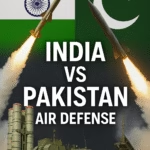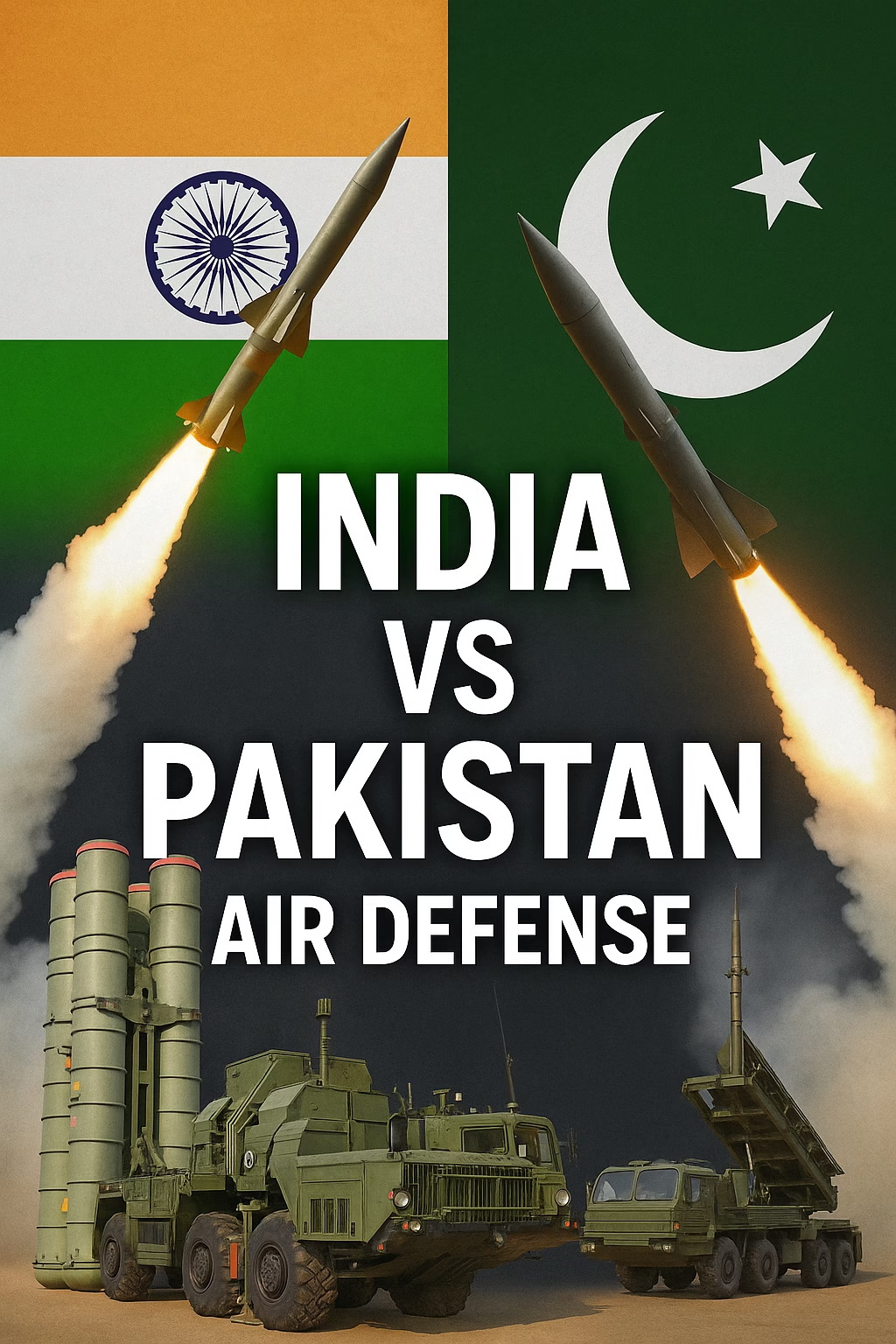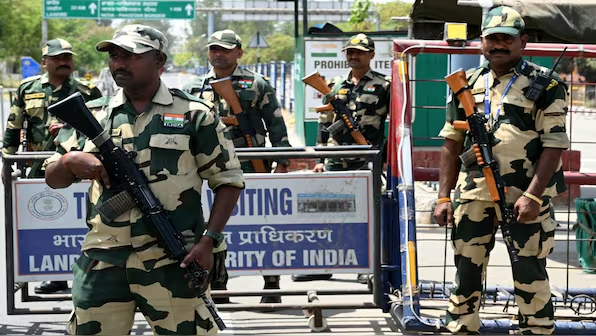Introduction
In South Asia, the rivalry between India and Pakistan remains one of the world’s most enduring and volatile, with air defense emerging as a crucial pillar of national security for both nations. As regional tensions flare-often triggered by cross-border incidents, militant attacks, or political crises-the ability to detect, intercept, and neutralize aerial threats is no longer a luxury but a strategic imperative. The evolution of air defense technologies, from radar-guided guns to multi-layered missile shields, has fundamentally altered the calculus of deterrence and response. In the context of India vs Pakistan air defense, the stakes are exceptionally high: both countries possess nuclear arsenals, advanced air forces, and a history of military confrontations that have repeatedly tested the limits of their defensive capabilities.
This detailed analysis explores the India vs Pakistan air defense landscape, examining how decades of rivalry, technological innovation, and shifting alliances have shaped their respective doctrines and arsenals. We trace the historical trajectory of air defense in both nations, dissect current capabilities, and scrutinize the integration of command and control systems. The comparative study also delves into missile shields, anti-aircraft assets, external partnerships, and future roadmaps, culminating in a balanced assessment of strengths and vulnerabilities. As both countries modernize and adapt to new threats-ranging from ballistic missiles to drone swarms-their choices will not only determine battlefield outcomes but also influence the broader quest for strategic stability in South Asia.
1. Historical Background
The story of India vs Pakistan air defense begins in the crucible of partition and the wars that followed. Both countries inherited limited air defense capabilities from British India in 1947, relying initially on World War II-era anti-aircraft guns and rudimentary radar systems.
Major Conflicts and Doctrinal Shifts
- 1965 and 1971 Wars: The Indo-Pakistani wars of 1965 and 1971 highlighted the vulnerability of both nations to air attacks. During the 1965 conflict, Pakistan’s US-supplied F-86 Sabres and India’s Hawker Hunters clashed repeatedly, exposing gaps in radar coverage and ground-based air defenses. The 1971 war, which led to the creation of Bangladesh, saw both sides attempt to cripple each other’s airfields and logistics, prompting urgent investments in radar networks and surface-to-air missile (SAM) systems.
- Kargil Conflict (1999): The Kargil War underscored the need for rapid detection and neutralization of enemy aircraft and missiles in mountainous terrain. India’s experience with Pakistani intrusions led to a renewed focus on integrated air defense and the acquisition of mobile SAM systems.
- Balakot and Beyond: The 2019 Balakot air strike and Pakistan’s subsequent aerial retaliation marked a watershed in India vs Pakistan air defense. India’s use of advanced radars and quick-reaction missiles, coupled with Pakistan’s deployment of Chinese-origin air defense assets, signaled a new era of technological competition.
Key Milestones
- India’s induction of the Russian Pechora (SA-3) and OSA-AK (SA-8) systems in the 1970s and 1980s.
- Pakistan’s acquisition of US Hawk and Chinese HQ-series SAMs during the Cold War.
- The post-Kargil launch of India’s Ballistic Missile Defence (BMD) program and Pakistan’s modernization with Chinese LY-80 and HQ-9 systems.
The persistent threat of escalation-especially with the introduction of nuclear-capable missiles-has kept air defense at the forefront of both countries’ military planning.
2. Current Air Defense Capabilities
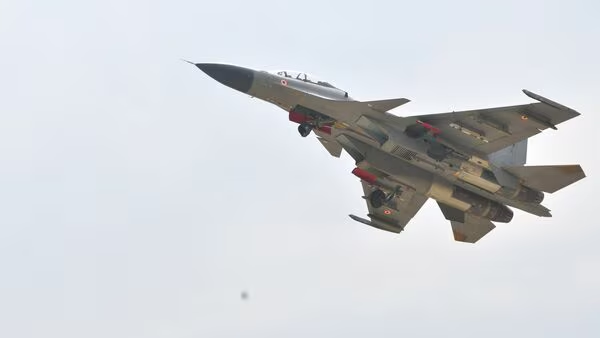
India’s Air Defense Systems
India’s approach to air defense is characterized by a multi-layered, network-centric architecture, integrating indigenous innovation with advanced imports.
S-400 Triumf
- Origin: Russia
- Deployment: 3 squadrons operational, 2 more by 2026
- Detection Range: Up to 600 km
- Engagement Range: Up to 400 km
- Capabilities: Simultaneously tracks 300 targets, engages 36 at once, intercepts aircraft, ballistic/cruise missiles, and drones at high speed (up to Mach 14).
- Role: Forms the backbone of India’s strategic air defense, covering major population centers and critical military assets. The S-400’s range allows India to monitor and, if necessary, engage threats deep inside Pakistani airspace, providing a significant deterrence advantage.
Akash Surface-to-Air Missile
- Origin: Indigenous (DRDO)
- Range: 25–50 km (Akash-NG up to 70 km)
- Role: Medium-range defense against aircraft, helicopters, and drones. Widely deployed across the Indian Army and Air Force, with ongoing upgrades to enhance mobility and targeting.
Barak-8 (MR-SAM) and SpyDer
- Barak-8: Jointly developed with Israel, range 70–100 km, capable of intercepting high-speed aircraft, cruise missiles, and UAVs. Deployed by all three services (Air Force, Army, Navy).
- SpyDer: Israeli quick-reaction system, range 15–35 km, effective against low-flying threats and precision-guided munitions.
QRSAM and VSHORADS
- QRSAM: Indigenous, range 25–30 km, designed for rapid deployment and engagement of low-altitude threats.
- VSHORADS: Very Short Range Air Defence System, man-portable, optimized for low-altitude aerial threats, currently being inducted.
Integration with IAF & Indigenous Programs
- India’s focus on self-reliance is evident in the ongoing “Make in India” initiative, with DRDO leading the development of next-generation air defense systems and radars. The Akashteer system automates and integrates air defense control, reducing reaction time and risk of friendly fire.
Pakistan’s Air Defense Systems
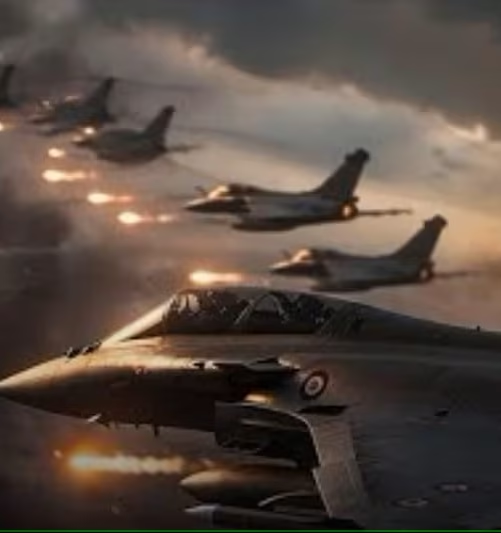
Pakistan’s air defense relies on a mix of Chinese-origin systems and legacy Western equipment, reflecting budgetary constraints and strategic partnerships.
HQ-9/P (FD-2000)
- Origin: China
- Range: 100–200 km (HQ-9/P variant)
- Capabilities: Comparable to older S-300 systems, provides long-range coverage for key cities and military installations, but lacks the multi-target engagement and radar sophistication of India’s S-400.
LY-80 (HQ-16) and FM-90
- LY-80: Medium-range SAM, range 40–70 km, forms the backbone of Pakistan’s layered defense, covering strategic sites and urban centers.
- FM-90: Short-range system, range 15 km, used for point defense against low-flying threats.
Air Defense with PAC JF-17 Thunder and Drones
- The JF-17, co-produced with China, is equipped with modern avionics and can carry air-to-air missiles for limited air defense roles. Pakistan is also investing in drones and UAVs for surveillance and potential strike missions, though its indigenous drone industry is less mature than India’s.
Support from China and Turkey
- Pakistan’s reliance on Chinese technology extends to radar systems and future procurement plans, with Turkey also supporting drone and electronic warfare capabilities.
India vs Pakistan Air Defense: Comparative Overview
India’s multi-tiered, sensor-fused network offers greater depth, redundancy, and technological sophistication. Pakistan’s systems, while modernizing, remain more limited in range and integration, focusing on protecting high-value targets rather than establishing comprehensive airspace dominance.
3. Command, Control & Integration
India’s IACCS (Integrated Air Command and Control System)
- Function: Centralized, automated command and control integrating all ground-based and airborne sensors, weapon systems, and command nodes.
- Features: Real-time data sharing, sensor fusion from Army, Air Force, and civilian radars, rapid “sensor-to-shooter” loops, and robust redundancies for seamless operations.
- Integration: The Akashteer system automates air defense control, enhancing situational awareness and reducing friendly fire risks. Joint exercises (e.g., Exercise Devil Strike) validate the effectiveness of this integrated approach.
Pakistan’s C4I Systems
- C4I (Command, Control, Communications, Computers, and Intelligence): Pakistan has invested in integrating Chinese-supplied radars and command systems, but its network is less automated and comprehensive than India’s IACCS.
- Technological Readiness: While Pakistan has improved inter-branch communication and real-time threat assessment, it lacks the scale and redundancy of India’s network-centric architecture.
India vs Pakistan Air Defense: Command and Control
India’s IACCS provides a decisive edge in terms of speed, coordination, and resilience, enabling a unified response across services and maximizing the effectiveness of its multi-layered defenses.
4. Missile Shield & Anti-Aircraft Capabilities
India’s Ballistic Missile Defense (BMD)
- Structure: Dual-tier system with Prithvi Air Defence (PAD) for high-altitude interception (exo-atmospheric, up to 80 km) and Advanced Air Defence (AAD) for lower altitude (endo-atmospheric, 15–30 km).
- Coverage: Designed to intercept ballistic missiles with ranges up to 3,000 km, using a network of long-range radars (Swordfish, Super Swordfish) and command centers.
- Status: Operational in phased deployments, with plans to shield major cities and critical infrastructure.
Pakistan’s Missile Defense Capabilities
- Current Status: Pakistan lacks a dedicated BMD system. Its HQ-9/P can engage some ballistic and cruise missiles within a limited range (up to 200 km), but it does not provide comprehensive missile shield coverage.
- Recent Tests: The Abdali (Hatf-II) SRBM (range: 180–450 km) highlights Pakistan’s focus on tactical missile capability, but India’s layered air defense can intercept such threats before they reach critical targets.
Drones, UAVs, and Anti-Drone Systems
- India: Has developed and deployed swarm drones for offensive and defensive roles, integrating AI-based surveillance and counter-UAS grids to neutralize hostile drones and loitering munitions.
- Pakistan: Invests in drones for reconnaissance and asymmetric warfare, with support from China and Turkey. However, its anti-drone capabilities and indigenous production lag behind India’s.
India vs Pakistan Air Defense: Missile Shield
India’s operational BMD and advanced anti-drone systems provide a significant qualitative and technological advantage, allowing it to counter a wider spectrum of threats more effectively.
5. External Support & Defense Partnerships
India’s Defense Ties
- Russia: Supplier of S-400, Pechora, and Igla systems, crucial to India’s long-range and portable air defense layers.
- Israel: Co-developer of Barak-8, supplier of advanced radars, UAVs, and loitering munitions (e.g., Harpy for SEAD/DEAD roles).
- France: Provider of Rafale fighters and associated air-launched munitions, enhancing air superiority and integrated defense.
- United States: Supplier of C-130J and C-17 transport aircraft, P-8I maritime patrol aircraft, and support for joint exercises and technology transfer.
Pakistan’s Defense Partners
- China: Primary supplier of HQ-9/P, LY-80, and radar systems, as well as JF-17 fighters and drones. Extensive technology transfer and joint exercises underpin Pakistan’s modernization.
- Turkey: Supports Pakistan’s drone and electronic warfare capabilities, with ongoing collaboration in UAV development and integration.
Impact of Partnerships
India’s diverse partnerships enable access to cutting-edge technologies, reduce dependency on single suppliers, and foster indigenous innovation. Pakistan’s reliance on China provides cost-effective solutions but limits access to Western technologies and broader interoperability.
6. Recent Developments & Future Roadmaps
India’s Innovations and Modernization
- DRDO Projects: Ongoing development of indigenous systems like QRSAM, VSHORADS, and Project Kusha (long-range SAM, up to 350 km).
- Make in India: Emphasis on domestic production, with over 200 startups involved in drone and AI-based defense technologies.
- AI and Drone Swarms: Induction of heterogeneous swarm UAVs for both offensive and defensive operations, coordinated with precision missile systems for real-time targeting.
- Future Deployments: Full operational capability of S-400 by 2026, expansion of BMD coverage, and integration of new radar and command systems.
Pakistan’s Modernization and Strategy
- Low-Cost, Agile Defenses: Focus on expanding LY-80 and HQ-9 coverage, investing in mobile and survivable launchers, and enhancing electronic warfare capabilities.
- Chinese Support: Continued procurement of advanced SAMs, radars, and drones, with potential future acquisitions of NASAMS or similar systems.
- AI and Drones: Collaboration with Turkey and China to develop indigenous UAVs and anti-drone systems, though progress is slower than India’s.
Procurement and Deployment
- India: Orders for additional Akash, Barak-8, and QRSAM units; ongoing trials and induction of VSHORADS and new radar systems.
- Pakistan: Expansion of HQ-9/P and LY-80 units, upgrades to JF-17 fleet, and potential new drone acquisitions.
7. Comparative Analysis: Strengths & Weaknesses
| Feature/Capability | India | Pakistan | Edge |
|---|---|---|---|
| Long-Range SAM | S-400 Triumf (400 km, multi-target, AESA radar) | HQ-9/P (100–200 km, limited multi-target) | India |
| Medium-Range SAM | Barak-8 (70–100 km, AESA radar), Akash-NG (70 km) | LY-80 (40–70 km, phased array), HQ-16 | India |
| Short-Range SAM | SPYDER (15–35 km), QRSAM (25–30 km), VSHORADS | FM-90 (15 km), Crotale | Parity (slight India) |
| Ballistic Missile Defense | Dual-tier BMD (PAD + AAD, operational) | None (HQ-9/P limited capability) | India |
| Drone/Anti-Drone Systems | Swarm drones, C-UAS grid, AI integration | Limited, imports from China/Turkey | India |
| Command & Control | IACCS, Akashteer, real-time sensor fusion | C4I, Chinese radars, less integrated | India |
| Radar Technology | AESA, multi-layered, indigenous & imported | Phased array, mostly Chinese imports | India |
| Indigenous Capability | Strong (DRDO, Make in India) | Growing, but reliant on China | India |
| External Support | Russia, Israel, France, US | China, Turkey | India (diversity) |
| Strategic Depth | Multi-layered, two-front scenario ready | Focused on key cities/installations | India |
Summary of Strengths and Weaknesses
- India: Superior range, radar, and integration; robust indigenous base; operational BMD; greater redundancy and flexibility.
- Pakistan: Modernizing rapidly, strong Chinese support, effective medium-range coverage, but limited by range, integration, and indigenous production.
Conclusion
The India vs Pakistan air defense comparison reveals a clear technological and strategic gap. India’s multi-layered, network-centric architecture-anchored by the S-400, Barak-8, Akash, and a robust BMD shield-offers comprehensive coverage against a spectrum of threats, from fighter jets to ballistic missiles and drone swarms. The integration of advanced command and control systems, indigenous innovation, and diverse external partnerships further solidify India’s edge.
Pakistan, while making significant strides through Chinese and Turkish support, remains focused on defending key assets rather than achieving full-spectrum dominance. Its reliance on imported systems, limited BMD capabilities, and slower progress in drone and AI integration highlight areas of vulnerability in the India vs Pakistan air defense equation.
Ultimately, the effectiveness of air defense will play a pivotal role in deterrence and crisis management in South Asia. While technological superiority can provide a decisive edge, the risks of escalation-especially in a nuclear environment-underscore the need for responsible defense spending, robust command structures, and above all, sustained diplomatic engagement. As both nations continue to modernize, the quest for strategic stability will depend not only on missiles and radars, but also on the wisdom to prevent conflict and foster regional peace
Read more at worldsinsight.


